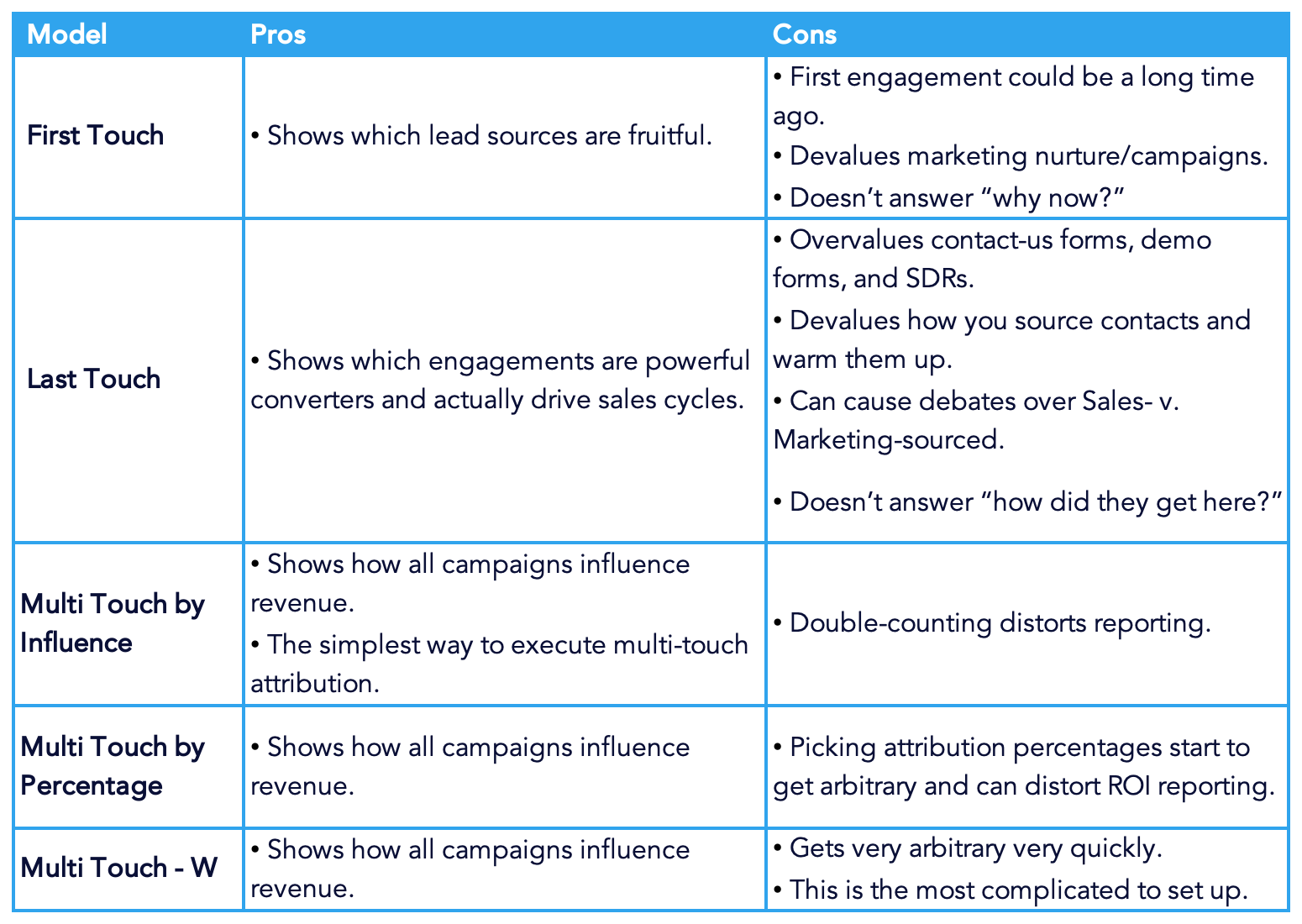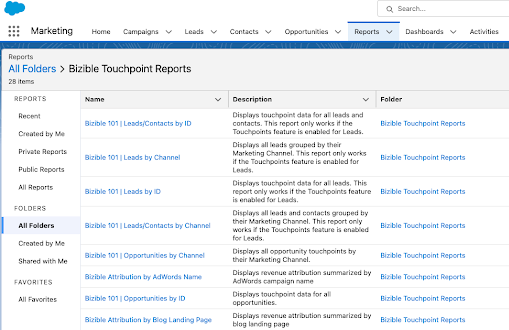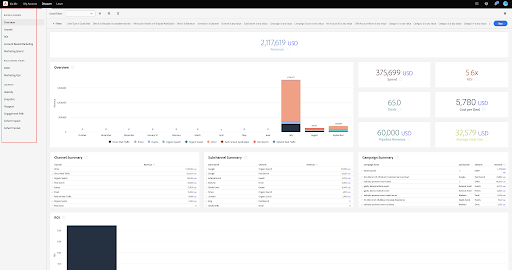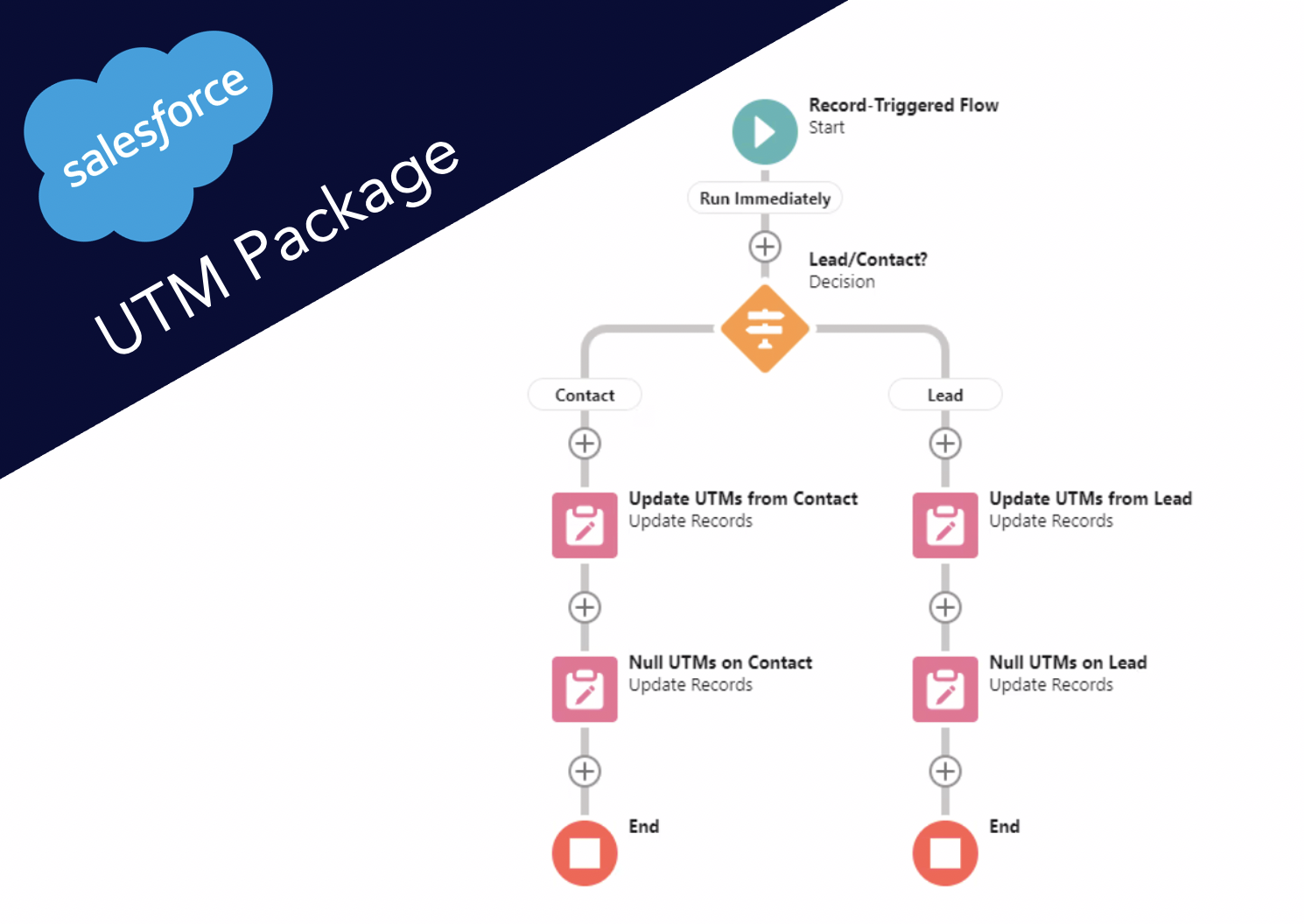One of tensest debates across Marketing, Sales, and LDR teams is about attribution. Here’s how to set realistic expectations, pick a suitable model, and have more constructive conversations about marketing attribution.
>> Related: How to Structure Salesforce Campaigns for Attribution <<
In this post:
First up, let’s demystify the process
Outside of MOPs, there isn’t much fluency in how attribution data is created. So show everyone how we gather and report this data:
- We use UTMs to track which campaigns, channels, and tactics source Leads.
- We track those Leads through the funnel.
- And then we build reports to show which campaigns, channels, and tactics sourced and influenced the Opportunities and Revenue.
- The attribution model itself is just a lens into the underlying data.
Then rightsize expectations
It’s also important to set (and likely lower) expectations of what a marketing attribution model delivers:
- There isn’t “one model to rule them all”. Different teams ask different questions. Last Touch attribution doesn’t help the SEM teams optimize their ad terms.
- Similarly, you want to see which campaigns/tactics/channels source Leads, and which influence (or nurture) them. If you’re only using a source model, prepare to hear ignorant statements like “email is useless.” 😡
- Much like MQL thresholds, the model isn’t in a locked state. As your business evolves, you can change up your attribution model to answer new questions.
- A wonkier (or custom) attribution model isn’t necessarily better. Simple, self-evident definitions will minimize confusion.
- Attribution projects should have an ROI goal – Are we learning anything? Doing things more efficiently? Optimizing spend? If not, why are we even doing this?
Try on the 5 most common attribution models
When choosing a model, use real-life scenarios to expose their distortions.
Meet Avery – Avery was scanned at a trade show 3 years ago. Since then we nurtured them by email. Today they clicked on an ebook link and registered for a demo.
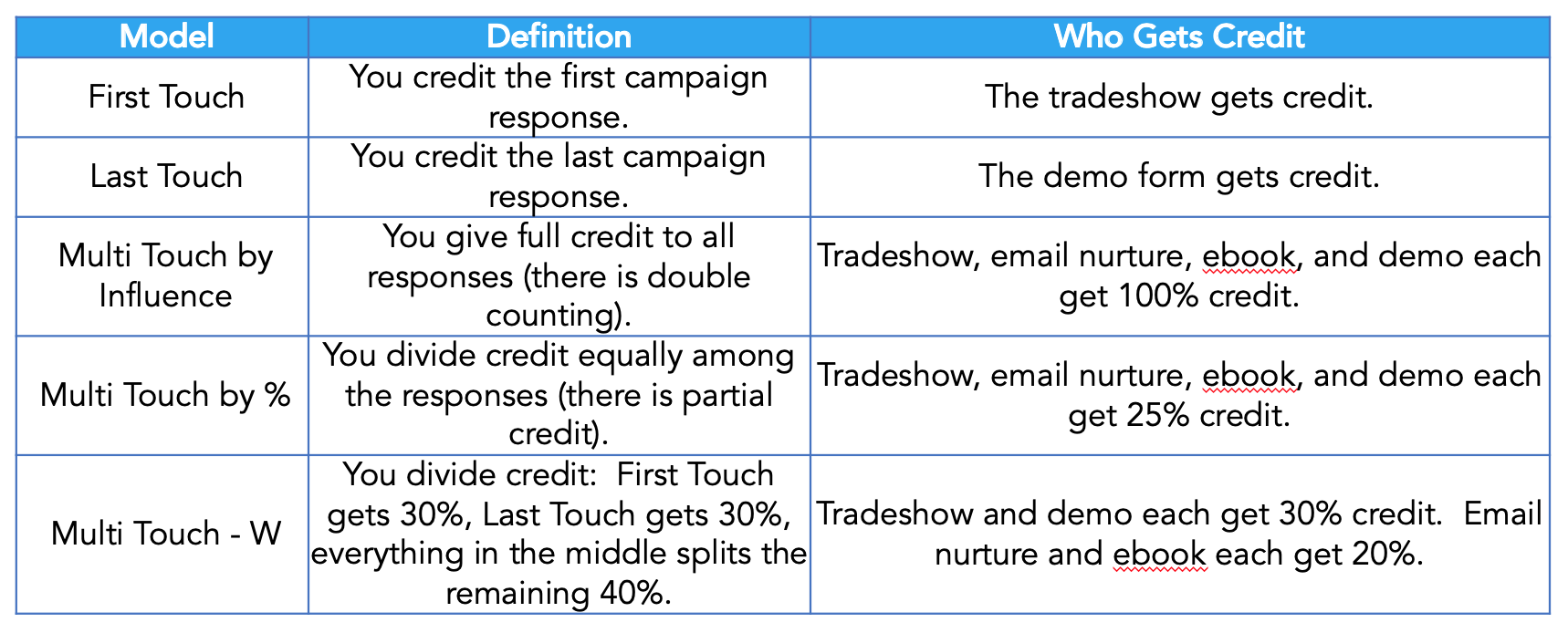

Pros/cons of different attribution models
Next, have a frank conversation about the blind spots and biases within each model.
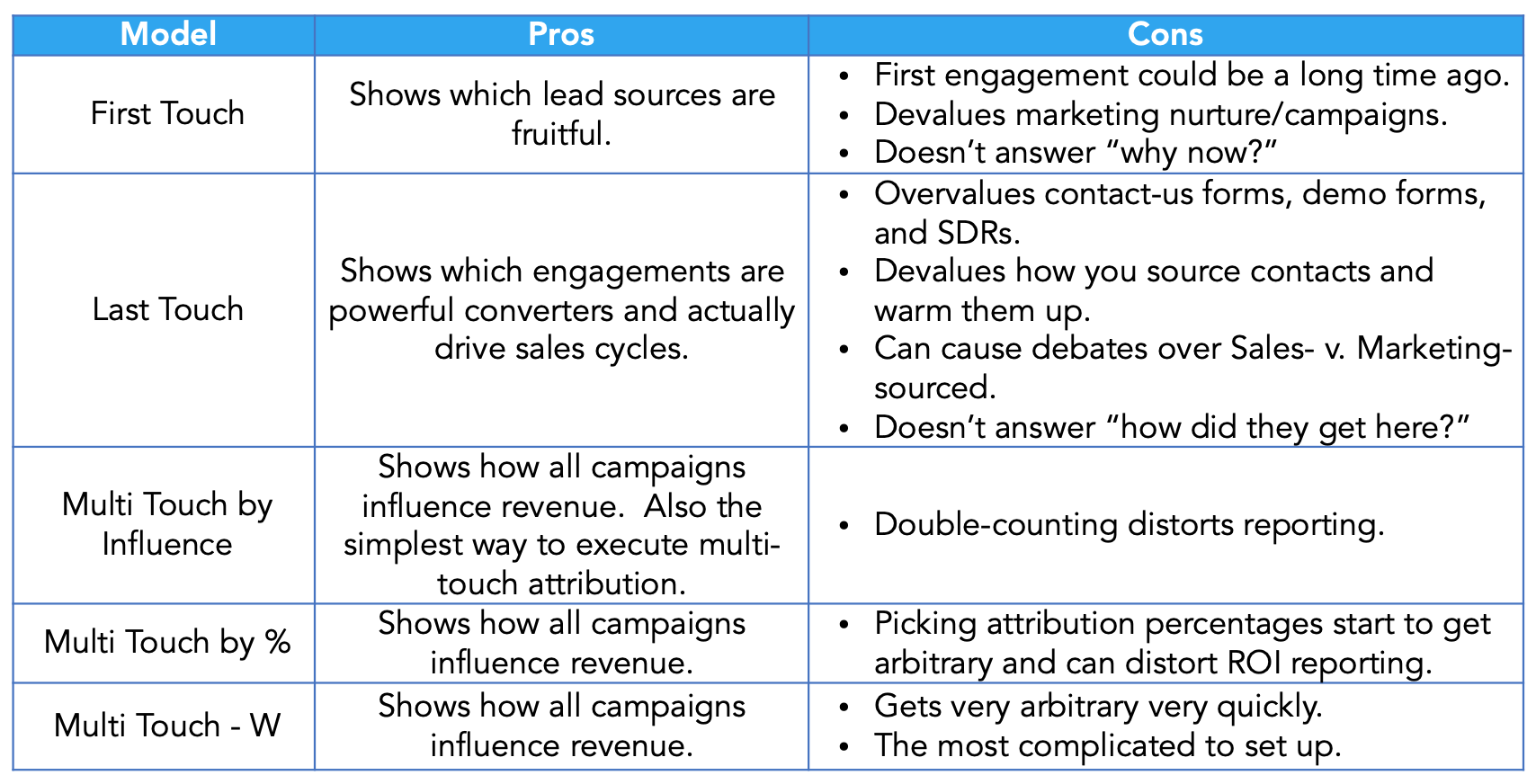

Often a model just “feels right” for your business. We usually recommend using these two:
- Use a Last Touch report to track the last campaign response before becoming an MQL.
- Use a Multi Touch by Influence report to show how, over time, a certain campaign accrues a lot (or a little) influence.
Using both ensures you’re capturing the value of content or campaigns like user conferences, which aren’t a good source of new MQLs, but influence pipeline and bookings over time.
But honestly, the exact model is less important than using UTMs and creating the underlying data. In fact, start using UTMs now while you debate which model(s)!
Read on for the next step in the attribution playbook: 3 Ways to Implement a Marketing Attribution Model >

